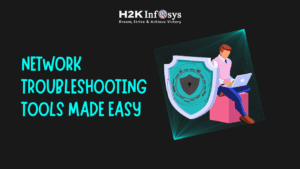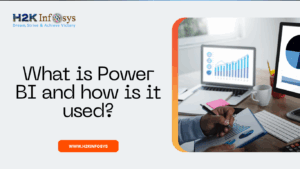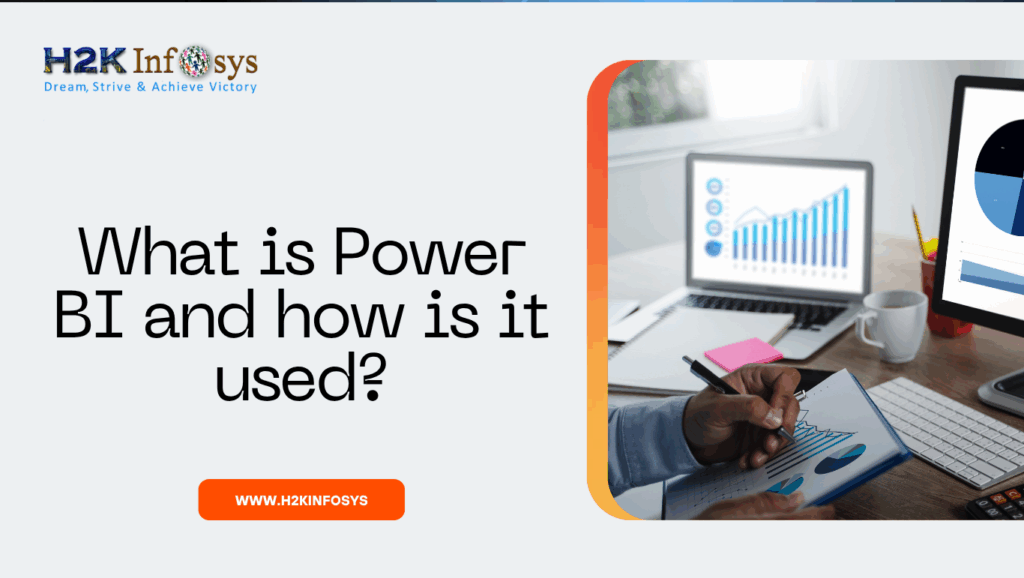There is a significant difference between merely surviving and truly thriving, and as a business owner, you likely understand this distinction. But do you know how Digital Marketing can impact your business? In today’s interconnected world, where the Internet plays a pivotal role in our daily lives, the importance of Digital Marketing is undeniable. It has become a vital component of how businesses connect with their customers.
What is Digital Marketing?
Digital Marketing encompasses a variety of strategies and techniques used to promote products, services, or brands through online channels. It includes practices such as search engine optimization (SEO), content marketing, social media marketing, email marketing, and online advertising. Unlike traditional marketing methods, digital marketing leverages the power of the internet to reach a global audience, providing businesses with the ability to target specific demographics and measure the effectiveness of their campaigns in real-time. As consumers increasingly turn to digital platforms for information and shopping, mastering digital marketing has become essential for businesses aiming to stay competitive and relevant in today’s market.
The 5Ds of Digital Marketing
The 5Ds of Digital Marketing represent five key elements that are essential for effective digital marketing strategies. They include:
- Digital Devices: These are the gadgets people use to interact with digital media, such as smartphones, tablets, computers, and smart TVs.
- Digital Platforms: Platforms like social media, search engines, email, and websites where digital marketing activities take place.
- Digital Media: Channels through which marketing messages are delivered, including websites, social media, email, and search engines.
- Digital Data: The information collected about audience interactions and behaviors to personalize and optimize marketing efforts.
- Digital Technology: Tools and software used to create, measure, and analyze marketing campaigns, such as CRM systems and analytics platforms.
Why Digital Marketing?
Digital Marketing is crucial because it offers unparalleled reach and engagement with potential customers. Unlike traditional marketing methods, it allows businesses to target specific demographics, ensuring that marketing efforts are directed at the right audience. Digital marketing is cost-effective, providing a higher return on investment through precise analytics and real-time data, which enable continuous optimization of campaigns. It also facilitates direct interaction with customers, fostering stronger relationships and brand loyalty. In an increasingly digital world, mastering digital marketing is essential for businesses to stay competitive, relevant, and effectively communicate their value proposition to a global audience.

How Does Digital Marketing Work?
Digital marketing works by leveraging various online channels and strategies to promote products, services, or brands to a target audience. Here’s a breakdown of how it operates:
Audience Research and Segmentation
- Digital marketing begins with understanding the target audience. This involves researching demographics, interests, behaviors, and pain points. Tools like Google Analytics and social media insights help in gathering this data.
- Audience segmentation follows, where the broader audience is divided into smaller, more manageable groups based on specific criteria such as age, location, interests, and buying behavior. This segmentation allows for more personalized and effective marketing efforts.
Setting Goals and Objectives:
- Clear goals are established, such as increasing website traffic, generating leads, boosting sales, or enhancing brand awareness. These goals guide the creation and execution of marketing strategies.
Developing a Strategy:
- A comprehensive digital marketing strategy is created, outlining the channels and tactics to be used. Common strategies include content marketing, SEO (Search Engine Optimization), social media marketing, email marketing, PPC (Pay-Per-Click) advertising, and influencer marketing.
Content Creation:
- High-quality, relevant content is central to digital marketing. This content can take various forms, including blog posts, videos, infographics, social media updates, and emails. The content should address the needs and interests of the target audience, providing value and encouraging engagement.
Implementation:
- The strategy is put into action by distributing content across chosen digital channels. For example, blog posts are published on the company website and shared on social media, email newsletters are sent to subscribers, and PPC ads are launched on search engines and social media platforms.
Optimization for Search Engines:
- SEO ensures that the content ranks well on search engine results pages (SERPs). This involves keyword research, on-page optimization, and building backlinks. Higher visibility on search engines increases organic traffic to the website.
Engagement and Interaction:
- Engaging with the audience is crucial. This includes responding to comments, participating in discussions, and addressing customer inquiries promptly. Social media platforms are particularly effective for fostering direct interaction.
Analytics and Monitoring:
- Digital marketing campaigns are continuously monitored using tools like Google Analytics, social media analytics, and email marketing software. These tools provide insights into the performance of each campaign, such as traffic sources, user behavior, conversion rates, and ROI (Return on Investment).
Adjustments and Optimization:
- Based on the data collected, campaigns are adjusted and optimized for better performance. This might involve tweaking ad copy, changing keywords, refining audience targeting, or updating content.
Reporting and Analysis:
- Regular reports are generated to evaluate the success of the campaigns. This helps in understanding what worked well and what didn’t, guiding future marketing efforts.
By integrating these steps, digital marketing enables businesses to reach a vast audience, engage with customers, and achieve their marketing goals efficiently and effectively.
Marketing Channels in Digital Marketing
Digital marketing utilizes a variety of channels to reach and engage with the target audience. Each channel serves a unique purpose and offers distinct advantages. Here’s an overview of the primary marketing channels in digital marketing:
Search Engine Optimization (SEO):
- SEO involves optimizing website content to rank higher on search engine results pages (SERPs). This increases organic (non-paid) traffic to the site. Techniques include keyword research, on-page optimization (such as meta tags and content quality), and off-page optimization (such as backlinks). SEO helps in building long-term visibility and credibility for the website.
Content Marketing:
- Content marketing focuses on creating and distributing valuable, relevant, and consistent content to attract and engage a target audience. This includes blog posts, articles, videos, infographics, eBooks, and whitepapers. The goal is to provide informative and useful content that addresses the audience’s needs and interests, thereby establishing the brand as a thought leader and trusted resource.
Social Media Marketing:
- Social media platforms such as Facebook, Instagram, Twitter, LinkedIn, and TikTok are used to promote content, engage with audiences, and build brand awareness. Social media marketing involves both organic activities (posting content, engaging with followers) and paid activities (social media ads, sponsored posts). It is an effective way to reach a broad audience, foster community engagement, and drive traffic to the website.
Email Marketing:
- Email marketing involves sending targeted emails to a list of subscribers to nurture leads, promote products or services, and build customer relationships. This includes newsletters, promotional offers, transactional emails, and automated email sequences. Personalization and segmentation are key strategies to increase engagement and conversion rates.
Pay-Per-Click (PPC) Advertising:
- PPC advertising allows businesses to display ads on search engines (like Google Ads) and social media platforms, paying only when the ad is clicked. PPC campaigns can be highly targeted based on keywords, demographics, and user behavior. This channel provides quick visibility and can drive immediate traffic and conversions.
Affiliate Marketing:
- Affiliate marketing involves partnering with affiliates (individuals or companies) who promote the business’s products or services in exchange for a commission on sales generated through their referral links. This channel leverages the reach and influence of affiliates to drive traffic and sales.
Influencer Marketing:
- Influencer marketing utilizes influencers—individuals with a significant following on social media or other online platforms—to promote products or services. Influencers share content and endorsements with their audience, leveraging their credibility and reach to increase brand awareness and drive sales.
Video Marketing:
- Video marketing involves creating and sharing videos to promote a brand, product, or service. This includes YouTube videos, social media videos, live streams, and webinars. Video content is highly engaging and can effectively convey complex information, showcase products, and tell brand stories.
Mobile Marketing:
- Mobile marketing targets users on their mobile devices through SMS, MMS, mobile apps, and mobile-friendly websites. Given the widespread use of smartphones, mobile marketing is essential for reaching users on the go.
Display Advertising:
- Display advertising involves placing banner ads, rich media ads, and other visual advertisements on websites, apps, and social media platforms. These ads can be targeted based on user behavior, interests, and demographics, providing broad visibility and driving traffic.
Online Public Relations (PR):
- Online PR involves managing and enhancing the online reputation of a brand through activities such as press releases, blog outreach, and influencer partnerships. It aims to increase media coverage and positive mentions of the brand across the web.
By leveraging these diverse marketing channels, businesses can create a comprehensive digital marketing strategy that reaches their audience at various touchpoints, drives engagement, and achieves their marketing objectives.

Digital Marketing Tools
Digital marketing tools are essential for executing, managing, and analyzing marketing campaigns effectively. These tools help businesses streamline their digital marketing efforts, gain insights, and optimize their strategies. Here’s an overview of some popular digital marketing tools:
Google Analytics:
- Google Analytics is a powerful web analytics tool that tracks and reports website traffic. It provides insights into user behavior, traffic sources, conversion rates, and more. Marketers can use this data to optimize their websites and marketing campaigns for better performance.
SEMrush:
- SEMrush is an all-in-one marketing tool that offers SEO, PPC, content marketing, and competitive research functionalities. It helps marketers with keyword research, backlink analysis, site audits, and tracking SERP positions. SEMrush is valuable for improving search engine visibility and understanding competitor strategies.
HubSpot:
- HubSpot is a comprehensive inbound marketing and sales platform. It includes tools for email marketing, social media management, content management, CRM, and lead generation. HubSpot’s integrated approach allows marketers to manage all aspects of their digital marketing campaigns from one platform.
Hootsuite:
- Hootsuite is a social media management tool that allows marketers to schedule posts, manage multiple social media accounts, and analyze social media performance. It supports platforms like Facebook, Twitter, LinkedIn, Instagram, and more, making it easier to execute and monitor social media campaigns.
Mailchimp:
- Mailchimp is a popular email marketing tool that offers features like email automation, audience segmentation, and A/B testing. It helps marketers create and send targeted email campaigns, track their performance, and optimize for better engagement and conversions.
Ahrefs:
- Ahrefs is a robust SEO tool known for its extensive backlink analysis and competitor research capabilities. It provides insights into organic search traffic, keyword rankings, and content gaps. Ahrefs is instrumental for developing and refining SEO strategies.
Canva:
- Canva is a user-friendly graphic design tool that allows marketers to create visually appealing graphics, social media posts, infographics, presentations, and more. With its drag-and-drop interface and a wide range of templates, Canva makes design accessible to non-designers.
Buffer:
- Buffer is another social media management tool that helps schedule posts, analyze performance, and manage multiple social accounts. It simplifies social media marketing by providing a centralized platform for content scheduling and analytics.
Moz:
- Moz offers a suite of SEO tools designed to improve search engine rankings. It includes features for keyword research, site audits, rank tracking, and link building. Moz also provides educational resources to help marketers stay updated on SEO best practices.
Trello:
- Trello is a project management tool that helps teams collaborate and organize tasks. Its visual board and card system make it easy to track progress, assign responsibilities, and manage digital marketing projects effectively.
Sprout Social:
- Sprout Social is a social media management and analytics tool that offers features like social listening, engagement, and reporting. It helps marketers understand their audience, measure performance, and refine their social media strategies.
Google Ads:
- Google Ads is an advertising platform that allows businesses to create and display ads on Google’s search engine and partner sites. It offers various ad formats, targeting options, and performance tracking features. Google Ads is essential for running effective PPC campaigns.
WordPress:
- WordPress is a popular content management system (CMS) used for creating and managing websites and blogs. It offers a wide range of plugins and themes that help marketers optimize their sites for SEO, user experience, and lead generation.
Hotjar:
- Hotjar is a user experience (UX) and behavior analytics tool that provides heatmaps, session recordings, and feedback polls. It helps marketers understand how users interact with their websites and identify areas for improvement.
Salesforce:
- Salesforce is a leading customer relationship management (CRM) platform that integrates with various marketing tools. It helps marketers manage leads, track customer interactions, and analyze data to drive better marketing decisions.
By leveraging these digital marketing tools, businesses can enhance their marketing efforts, gain valuable insights, and achieve better results. Each tool offers unique features that address different aspects of digital marketing, from SEO and social media management to email marketing and analytics.
Benefits of Digital Marketing
Digital marketing offers numerous benefits that make it an essential component of modern business strategies. Here are some key advantages:
Cost-Effectiveness:
- Digital marketing is often more cost-effective than traditional marketing methods. With tools like social media, email marketing, and content marketing, businesses can reach a large audience without spending excessively. Even small businesses with limited budgets can compete with larger companies.
Global Reach:
- Digital marketing enables businesses to reach a global audience. With the internet, geographical barriers are eliminated, allowing companies to expand their market beyond local boundaries. This global reach is especially beneficial for e-commerce businesses.
Targeted Audience:
- Digital marketing allows for precise targeting of specific audience segments based on demographics, interests, behaviors, and more. This ensures that marketing efforts are directed at those most likely to be interested in the product or service, increasing the chances of conversion.
Measurable Results:
- One of the biggest advantages of digital marketing is the ability to measure results in real-time. Tools like Google Analytics, social media analytics, and email marketing software provide detailed insights into campaign performance. Marketers can track metrics such as website traffic, conversion rates, and return on investment (ROI), allowing for data-driven decision-making.
Improved Conversion Rates:
- Digital marketing strategies, such as email marketing, social media advertising, and SEO, are designed to attract and convert leads into customers. With targeted messaging and personalized content, businesses can improve their conversion rates and achieve better results.
Enhanced Customer Engagement:
- Digital marketing facilitates direct interaction with customers through social media, email, and other online channels. This engagement helps build strong relationships, foster loyalty, and gain valuable feedback. It also allows businesses to respond to customer inquiries and address issues promptly.
Flexibility and Adaptability:
- Digital marketing campaigns can be quickly adjusted based on performance data and market changes. This flexibility allows businesses to experiment with different strategies, optimize their campaigns, and respond to new trends and opportunities.
Brand Awareness and Visibility:
- Digital marketing increases brand visibility and awareness through consistent online presence and engagement. Social media, content marketing, and SEO help businesses reach a wider audience and establish their brand as an authority in their industry.
Better Targeting and Personalization:
- Advanced targeting options and personalization techniques enable businesses to deliver tailored messages to specific audience segments. Personalized marketing increases the relevance of the message, leading to higher engagement and conversion rates.
Increased Customer Loyalty:
- Digital marketing strategies, such as email newsletters and social media interactions, help nurture relationships with customers. Providing valuable content and engaging with customers regularly fosters loyalty and encourages repeat business.
Higher ROI:
- Digital marketing often provides a higher return on investment compared to traditional marketing methods. The ability to track and measure performance, coupled with cost-effective strategies, ensures that marketing budgets are used efficiently to achieve the best possible results.
Competitive Advantage:
- Embracing digital marketing gives businesses a competitive edge in the market. Staying up-to-date with the latest trends and technologies ensures that companies can effectively reach and engage their target audience, outperforming competitors who rely solely on traditional marketing methods.
Access to Mobile Users:
- With the increasing use of smartphones and mobile devices, digital marketing ensures that businesses can reach users on-the-go. Mobile-friendly websites, apps, and targeted mobile ads enhance the user experience and capture the attention of mobile users.
By leveraging the benefits of digital marketing, businesses can enhance their online presence, reach a broader audience, and achieve their marketing goals more effectively. Digital marketing’s adaptability and measurable nature make it an indispensable tool for modern businesses aiming to thrive in a competitive landscape.
Examples of Digital Marketing in the Real World
Digital marketing has become integral to business strategies across various industries. Here are some real-world examples of how companies effectively utilize digital marketing to achieve their goals: check out Digital Marketing Online Course with Placement to learn more.
Content Marketing – HubSpot:
- HubSpot, a leader in inbound marketing, uses content marketing extensively. They provide valuable blog posts, eBooks, webinars, and templates to attract and engage their audience. By offering high-quality, informative content, HubSpot positions itself as a thought leader and drives significant traffic and leads to its website.
Social Media Marketing – Nike:
- Nike uses social media platforms like Instagram, Twitter, and Facebook to engage with their audience. They create compelling content, including inspirational stories, athlete endorsements, and user-generated content campaigns like #JustDoIt. Their social media strategy enhances brand loyalty and increases engagement with millions of followers.
Search Engine Optimization (SEO) – Moz:
- Moz, an SEO software company, excels in optimizing its online presence. They publish in-depth guides, blogs, and research articles that rank highly on search engine results pages. By focusing on SEO, Moz attracts organic traffic and establishes itself as an authority in the SEO industry.
Email Marketing – Amazon:
- Amazon uses personalized email marketing to recommend products based on users’ browsing and purchasing history. Their emails are tailored to individual preferences, offering timely deals and product suggestions. This personalized approach significantly boosts their sales and customer retention.
Pay-Per-Click (PPC) Advertising – Google Ads:
- Businesses like Airbnb use Google Ads to run targeted PPC campaigns. By bidding on relevant keywords, they ensure their ads appear at the top of search results. This visibility drives traffic to their website and generates bookings from users searching for accommodation options.
Influencer Marketing – Glossier:
- Glossier, a beauty brand, leverages influencer marketing by partnering with beauty bloggers and social media influencers. These influencers share their experiences with Glossier products, creating authentic and relatable content. This strategy increases brand awareness and drives sales through trusted recommendations.
Affiliate Marketing – Bluehost:
- Bluehost, a web hosting company, uses affiliate marketing to expand its reach. They partner with bloggers and website owners who promote Bluehost services through referral links. Affiliates earn a commission for each sign-up, creating a win-win situation that drives traffic and sales for Bluehost.
Video Marketing – Dollar Shave Club:
- Dollar Shave Club gained massive popularity with their humorous and engaging video marketing campaigns. Their launch video went viral, showcasing the brand’s personality and value proposition in an entertaining way. Video marketing helped them build brand awareness and acquire a large customer base quickly.
Mobile Marketing – Starbucks:
- Starbucks uses mobile marketing through its app, which offers features like mobile ordering, rewards programs, and personalized promotions. The app enhances customer convenience and engagement, encouraging repeat purchases and fostering customer loyalty.
Online Public Relations (PR) – Tesla:
- Tesla leverages online PR by generating buzz through press releases, social media announcements, and CEO Elon Musk’s tweets. Their PR strategy creates excitement around product launches and company news, garnering significant media coverage and public interest.
Interactive Content – BuzzFeed:
- BuzzFeed uses interactive content like quizzes, polls, and lists to engage users. These interactive elements are highly shareable and keep users on the site longer, driving traffic and ad revenue. BuzzFeed’s approach demonstrates the power of interactive content in capturing and retaining audience attention.
Remarketing – Booking.com:
- Booking.com uses remarketing to target users who have previously visited their website but did not make a booking. Through targeted ads displayed on various websites and social media platforms, they remind potential customers of their travel plans, increasing the chances of conversion.
These examples illustrate how diverse digital marketing strategies can be tailored to fit different business models and objectives. By leveraging various digital channels, companies can effectively reach and engage their target audience, driving growth and achieving their marketing goals.
How to Start with Digital Marketing
Starting with digital marketing can seem daunting, but breaking it down into manageable steps can help you build a strong foundation. Here’s a step-by-step guide to get you started with digital marketing:
Define Your Goals:
- Before diving into digital marketing, clearly define what you want to achieve. Whether it’s increasing brand awareness, driving website traffic, generating leads, or boosting sales, having specific goals will guide your strategy and help measure success.
Understand Your Audience:
- Conduct thorough research to understand your target audience. Create buyer personas that detail demographics, interests, behaviors, and pain points. Knowing your audience will help tailor your marketing efforts to meet their needs and preferences.
Build a Strong Online Presence:
- Website: Create a professional, user-friendly website that serves as the hub of your online presence. Ensure it’s optimized for mobile devices and search engines (SEO).
- Social Media: Establish profiles on relevant social media platforms where your audience is active. Consistently update these profiles with engaging content.
Create Quality Content:
- Develop a content strategy that aligns with your goals and audience interests. Produce high-quality, valuable content such as blog posts, videos, infographics, and eBooks. Content marketing helps attract and engage your audience, building trust and authority in your niche.

Optimize for Search Engines (SEO):
- Implement SEO best practices to improve your website’s visibility on search engines. This includes keyword research, optimizing on-page elements (titles, meta descriptions, headers), creating high-quality content, and building backlinks.
Utilize Social Media Marketing:
- Engage with your audience on social media platforms by sharing content, participating in conversations, and running targeted ads. Social media marketing helps build relationships, increase brand awareness, and drive traffic to your website.
Start Email Marketing:
- Build an email list and create targeted email campaigns to nurture leads and engage with your audience. Use email marketing tools to automate campaigns, segment your audience, and track performance. Personalized emails can drive conversions and build customer loyalty.
Run Pay-Per-Click (PPC) Campaigns:
- Consider running PPC campaigns on platforms like Google Ads and social media. PPC allows you to reach a targeted audience quickly and can drive immediate traffic to your website. Monitor and optimize your campaigns to maximize ROI.
Analyze and Measure Performance:
- Use analytics tools like Google Analytics, social media insights, and email marketing reports to track the performance of your digital marketing efforts. Monitor key metrics such as traffic, engagement, conversions, and ROI. Regularly analyze the data to understand what’s working and what needs improvement.
Stay Updated with Trends and Best Practices:
- Digital marketing is constantly evolving. Stay updated with the latest trends, tools, and best practices by following industry blogs, attending webinars, and participating in online communities. Continuous learning will help you stay competitive and adapt to changes in the digital landscape.
Adjust and Optimize:
- Based on your analysis, make necessary adjustments to your strategy. Experiment with different approaches, test new ideas, and continuously optimize your campaigns for better results. Flexibility and adaptability are key to success in digital marketing.
Seek Professional Help if Needed:
- If digital marketing seems overwhelming or you lack expertise, consider hiring a digital marketing consultant or agency. Professionals can provide guidance, execute strategies, and help achieve your marketing goals efficiently.
By following these steps, you can establish a solid foundation in digital marketing and start seeing results. Remember, digital marketing is a marathon, not a sprint. Consistency, patience, and a willingness to learn and adapt are essential for long-term success.
Conclusion
In conclusion, digital marketing has transformed the way businesses connect with their audiences, offering unparalleled opportunities for growth and engagement. By leveraging various digital channels and strategies—such as SEO, content marketing, social media, email marketing, PPC, and more—businesses can reach a global audience, target specific demographics, and measure their efforts with precision.
The benefits of digital marketing are vast, from cost-effectiveness and improved conversion rates to enhanced customer engagement and real-time analytics. Businesses can build stronger relationships with their customers, foster brand loyalty, and stay competitive in an ever-evolving digital landscape.
Starting with online digital marketing course with placement requires a clear understanding of your goals, audience, and the tools at your disposal. By creating valuable content, optimizing for search engines, engaging on social media, and continuously analyzing and optimizing your efforts, you can build a robust digital presence that drives meaningful results.
As the digital world continues to evolve, staying updated with the latest trends and best practices is crucial. Embrace the power of digital marketing to transform your business, reach new heights, and achieve your marketing objectives. Whether you’re a small business owner or part of a large enterprise, digital marketing offers the tools and strategies needed to thrive in today’s interconnected world.
























4 Responses